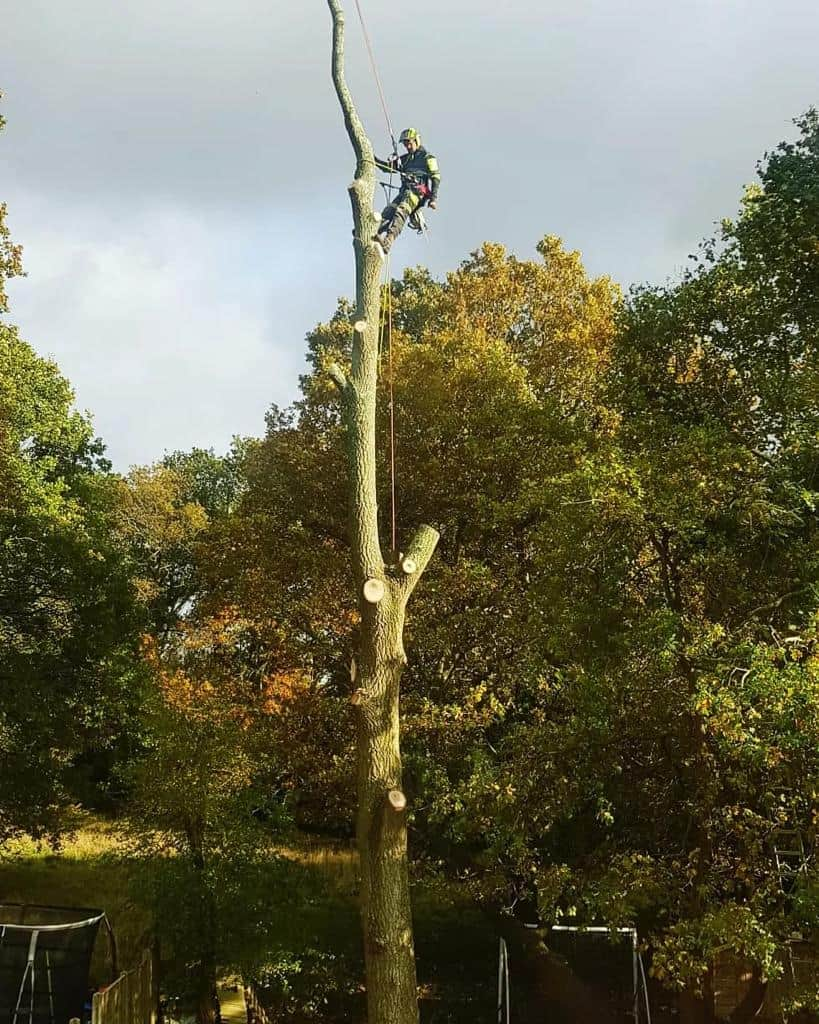Hedge cutting is a common practice among homeowners and gardeners, but many may wonder if it actually promotes faster growth in their plants. At first glance, cutting back hedges may seem like it could harm them, but in reality, strategic pruning and trimming can encourage healthier, more vigorous growth. In this article, we’ll explore how proper hedge cutting can influence growth rates, the benefits of cutting hedges, and how professional tree surgeons like LM Tree Surgery Fareham can help you achieve the best results for your hedges.
How Hedge Cutting Promotes Growth
Hedge cutting and pruning are vital for maintaining the health and appearance of your plants. By cutting back a hedge, you help redirect the plant’s energy into new growth. Here’s how it works:
1. Removal of Dead or Diseased Growth
When you cut back dead, diseased, or damaged parts of the hedge, the plant can focus its resources on healthy growth. Removing these parts prevents the spread of disease and allows the plant to redirect its energy into forming new, stronger growth. By cutting away weak or unproductive branches, you also help the hedge maintain a more robust structure.
2. Encouraging Lateral Growth
Regular trimming encourages lateral (side) growth in hedges, leading to a denser and fuller hedge. If a hedge is left to grow unchecked, it can become sparse or overly tall with minimal lateral growth. By cutting back the tips of the branches, you encourage the hedge to produce more shoots along the sides, which improves the overall density and fullness of the hedge.
3. Redirecting Growth Energy
When you trim your hedge, the plant will “focus” its energy on growing the remaining healthy branches rather than spreading its resources across the entire structure. This promotes more vigorous and faster growth in the areas that are cut back. By trimming at the right times of the year, you can achieve a balanced, healthy, and rapidly growing hedge.
The Best Time to Cut Hedges for Faster Growth
The timing of hedge cutting is crucial in determining how well the hedge responds. Cutting at the wrong time of the year can potentially stunt growth or cause unnecessary damage. Here’s what you need to consider:
1. Late Winter or Early Spring
The best time to cut most hedges is late winter or early spring, before new growth begins. This ensures that the hedge is not exposed to frost after cutting, and the plant can use its stored energy for rapid growth as the weather warms. Cutting during this time allows the plant to heal and focus on new, healthy growth as it enters the growing season.
2. Summer Trim for Maintenance
In the summer, it’s important to trim hedges lightly to maintain their shape and prevent them from becoming too overgrown. A light trim during this time encourages fresh growth and helps the hedge retain its shape, but it should be done carefully to avoid cutting too much.
3. Avoid Cutting During Dormancy
For hedges that are dormant in the winter, avoid cutting them too late in the season as this can cause damage and delay the spring’s growth. Always consider the type of hedge you have and its specific needs when deciding when to cut.
How Professionals Can Ensure Healthy Growth
While DIY hedge cutting can offer some benefits, professional tree surgeons have the experience and knowledge to achieve the best results for your hedge. Here’s how experts like LM Tree Surgery Fareham can help:
1. Proper Equipment and Techniques
Professional hedge cutting involves using the correct tools and techniques for the specific type of hedge you have. Tree surgeons are trained to assess the health and condition of your hedge before deciding how much to trim and where to make cuts. Using sharp, well-maintained equipment reduces the risk of damage to the plant and ensures clean cuts that promote healthy regrowth.
2. Tailored Advice for Faster Growth
A professional tree surgeon can also provide advice on the best trimming practices for your particular hedge species. Some hedges may require more frequent trimming than others, and some may need a specific cutting method to encourage the best growth. A tree surgeon’s expertise ensures that your hedge will grow faster, healthier, and more uniformly.
3. Health Checks and Pest Prevention
In addition to cutting, a professional tree surgeon will inspect the hedge for signs of disease or pests that could hinder its growth. By identifying and addressing these issues early, you can prevent future problems and encourage stronger, faster growth.
Conclusion
Hedge cutting can indeed encourage faster and healthier growth, but the key lies in timing, technique, and professional expertise. Proper cutting helps remove dead or diseased parts, encourages lateral growth, and redirects the plant’s energy to more productive areas. If you’re looking to boost the growth of your hedge and improve the overall appearance of your garden, working with a professional tree surgeon like LM Tree Surgery Fareham ensures the job is done correctly, safely, and effectively.
If you need expert hedge cutting or tree surgery services in Fareham and surrounding areas, get in touch with us today. Our team is ready to help you maintain a beautiful, healthy garden that flourishes year after year.
Call us on: 01329 759 693
Click here to find out more about LM Tree Surgery Fareham
Click here to complete our contact form and see how we can help with your trees needs.

